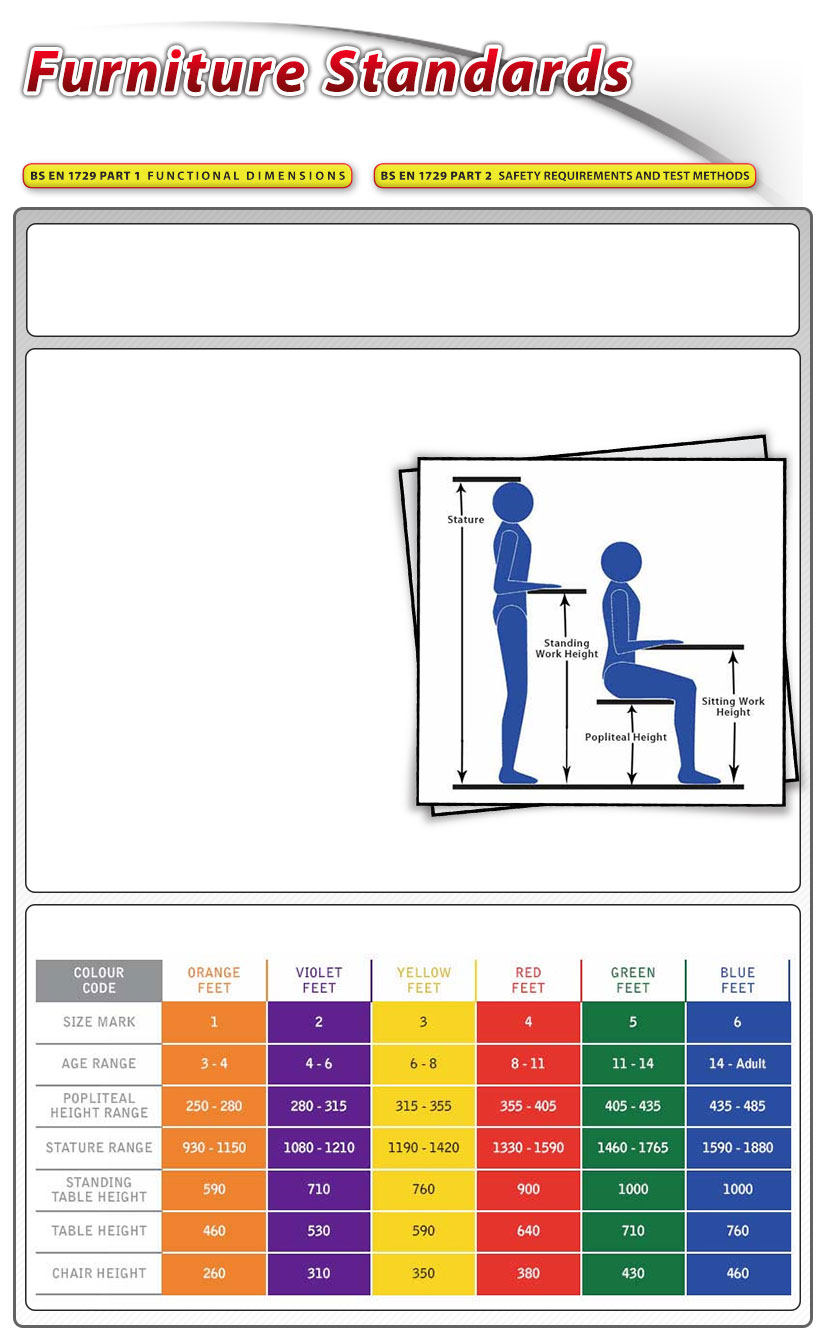The new British and European Standards for "Chairs and Tables for Educational Institutions" were approved in 2007. The new standards are:
While most existing school furniture will pass BS EN 1729 Part 2, the fundamental changes to compliant furniture design are in BS EN 1729 Part 1 which relates to the appropriate size, shape and ergonomic design of classroom furniture to maintain good posture and reduce RSI and back pain in school children.
To help you purchase furniture that complies to the new British and European standards, the following sizemark guide indicates which fixed seat heights and table heights are suitable for the child's age and size.
To ensure you purchase the most accurate height furniture for the individual child in compliance with the standards, we recommend that you measure the stature and popliteal height of the child. You can then match those measurements with the following sizemark guide.
Popliteal Height
Popliteal Height defines the correct seat height. The measurement is taken from the floor to the back of the knee when seated, with thighs horizontal and lower leg vertical with feet flat to the floor.
Stature
Stature is from the floor to the top of the head.
Sitting Work Height
Sitting work height defines the correct table height. The measurement is determined by sitting elbow height, which is the distance from the floor to the underside of the elbow whilst sitting with the upper arm vertical and the lower arm horizontal.
Standing Work Height
Standing work height defines the correct standing table height. The measurement is determined by standing elbow height, which is the distance from the floor to the underside of the elbow of a standing person with the upper arm vertical and lower arm horizontal.
Furniture Standards Guide - Match Your Table Height To Your Chair Height.
